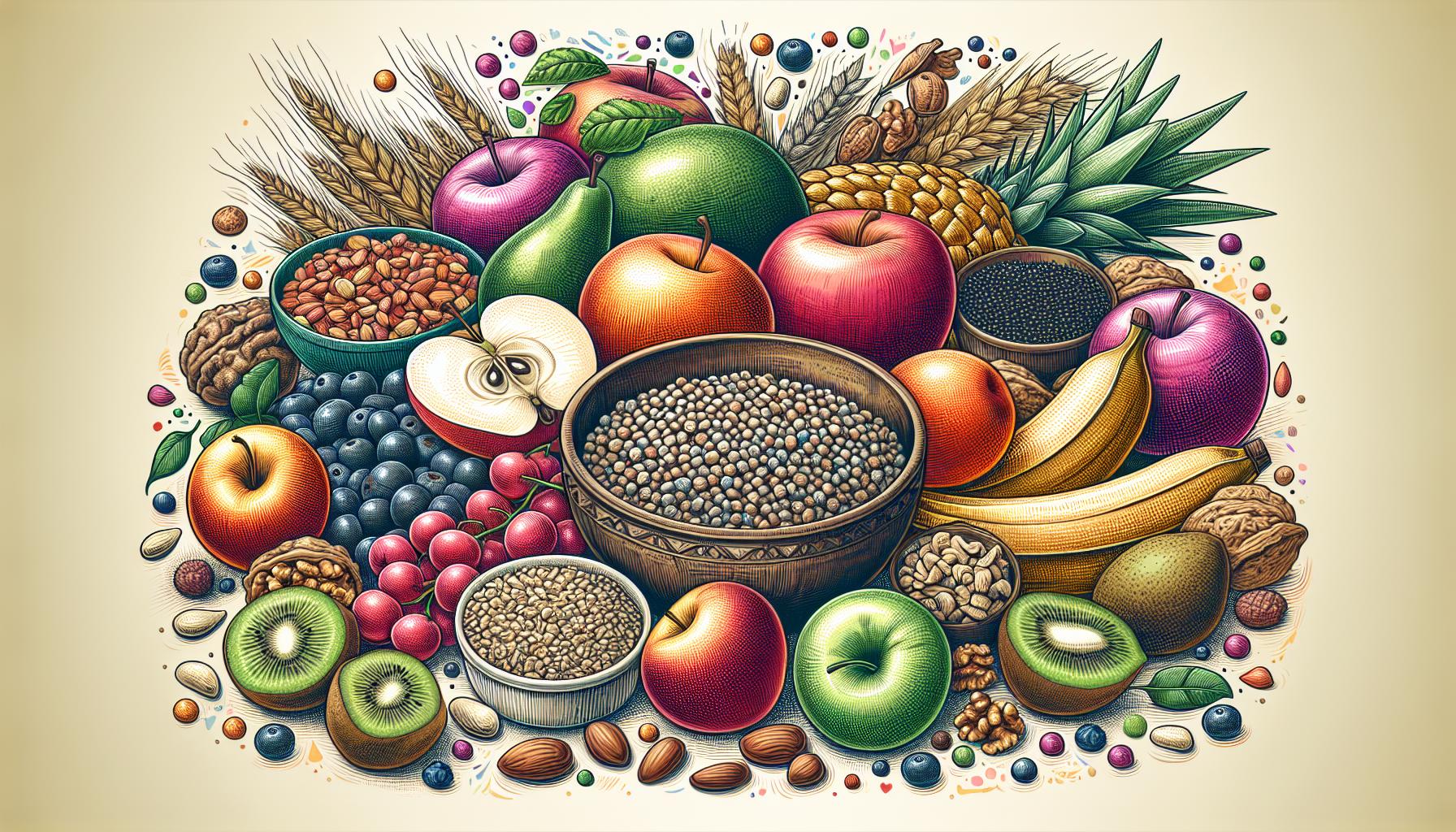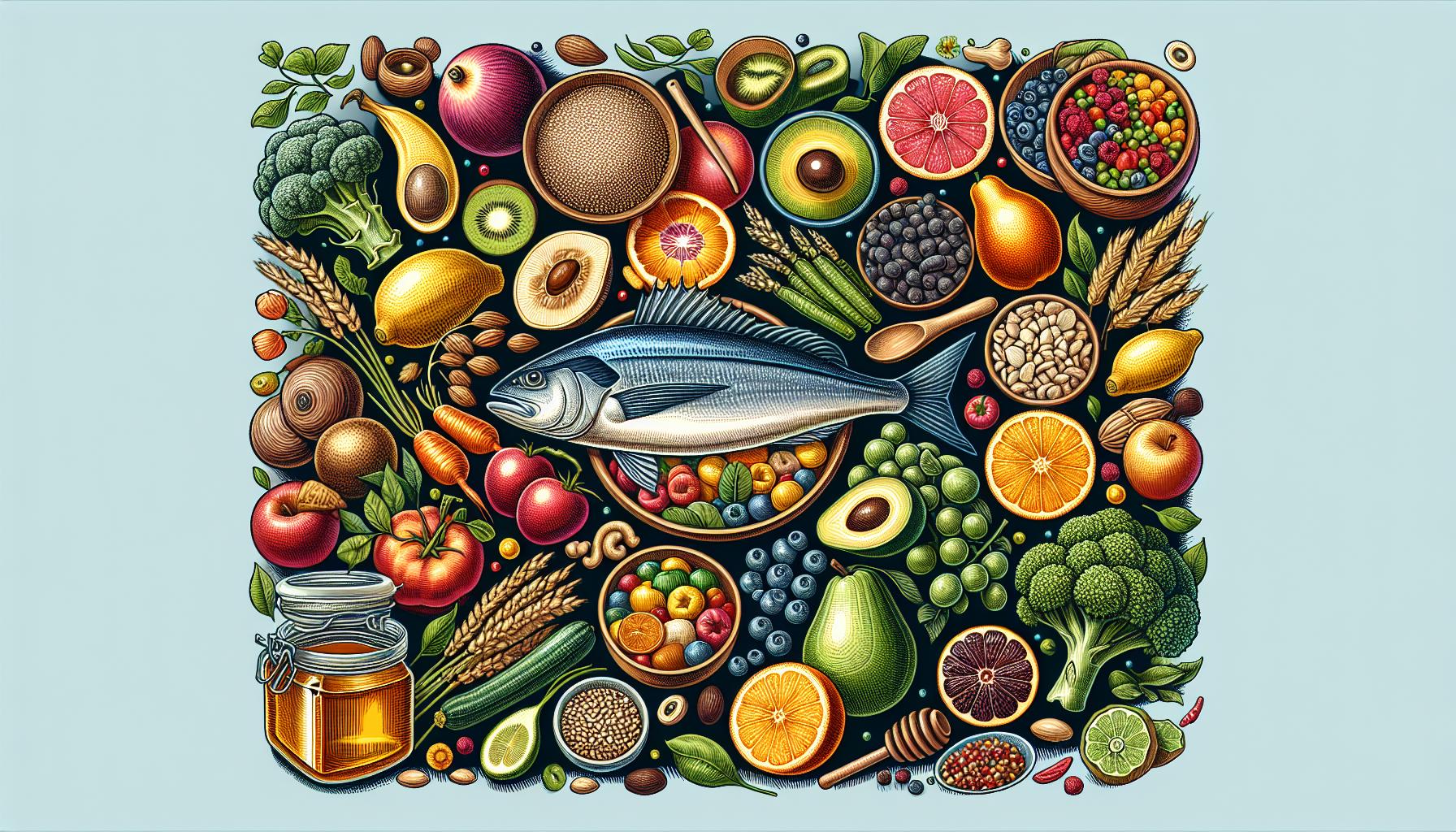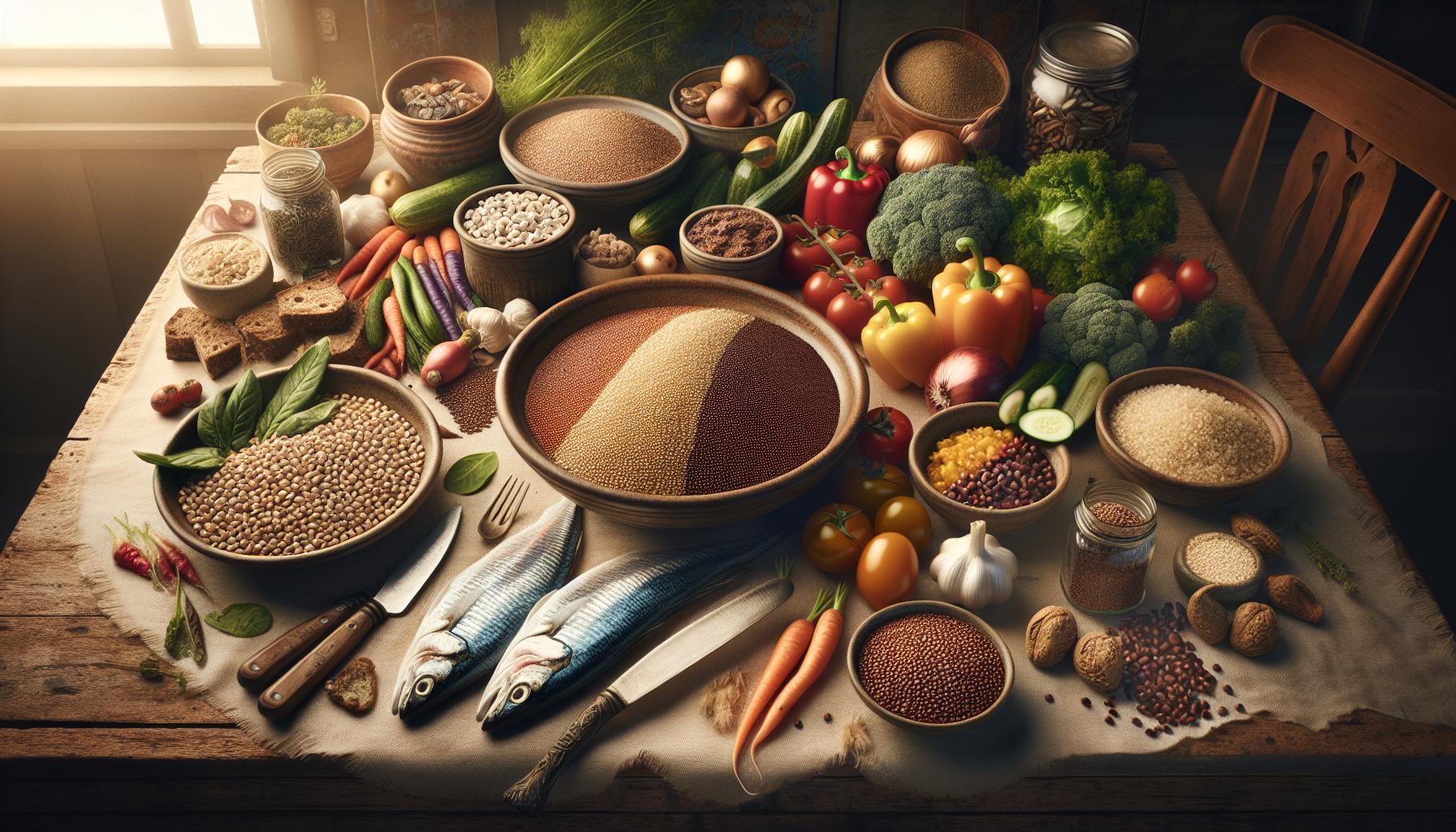Ever wondered how our ancestors ate and how it’s shaped the way we munch on our kale salads and protein shakes today? “100 Million Years Of Food” by Stephen Le takes us on a fascinating journey through the evolution of human diets. It’s like a time machine for your taste buds, showing us how our forebearers’ food choices influence our current cravings and health.
Why should you listen to me, Mike Piet, talk about this? Well, I’ve been knee-deep in the world of nutrition and evolutionary biology for years. My knack for dissecting complex scientific concepts and serving them up in an easy-to-digest format makes me your go-to guide. Plus, my relentless curiosity means I’ve dug deep to bring you the most savory bits of this book.
Three key takeaways you’ll get from this guide are: how our diet has evolved over millions of years and what it means for our health today, the surprising impact of geographical locations on our ancestors’ food choices, and practical advice on how we can apply ancient dietary wisdom in our modern lives. Trust me, it’s a journey worth taking.
Evolution of Human Diets: A Historical Overview
Digging into Stephen Le’s 100 Million Years Of Food made me realize just how much our ancestral eating habits shape our health today. Our journey through the ages is not just a tale of survival but an intricate dance with nature and the foods it offers. Remember how I mentioned the shift from foraging to farming? It’s a classic example of how our diet evolution isn’t just about the foods we ate, but also about the changing ways we accessed them.
The Hunter-Gather Era: Simplicity and Diversity
Back when our ancestors roamed the earth, their diets were surprisingly varied. They munched on whatever fruits, vegetables, and meats they could find, leading to a balanced and nutrient-rich diet. It’s kind of wild to think about how they thrived on such simplicity, a stark contrast to today’s complex food landscape. This era emphasized the power of natural foods, a lesson I personally took to heart by incorporating more whole foods into my diet.
The Agricultural Revolution: A Double-Edged Sword
Enter the Agricultural Revolution, and everything changed. Suddenly, we’re talking about the introduction of grains and domesticated animals into the human diet. This transition wasn’t all sunshine and rainbows, though. Sure, it meant more stable food sources, but it also led to less dietary diversity and the introduction of new health challenges. I can’t help but see parallels in today’s diet trends, where convenience often trumps variety and nutrition.
Modern Times: Nutrition’s Complex Web
Fast forward to today, and the landscape of human diets is as complex as ever. We’re dealing with the consequences of processed foods, sugar overload, and a departure from our dietary roots. However, as Stephen Le points out, understanding our nutritional past offers invaluable insights into optimizing our health. This perspective sparked a major overhaul in my own eating habits, ditching processed for whole, and diversity over monotony.
Impact of Ancestral Food Choices on Modern Diets

As an enthusiast for all things self-help and wellness, I’ve dived deep into how our ancestors’ choices still reverberate in our current kitchen pantries and dinner tables. Stephen Le‘s insights have been a game-changer for me, reshaping my perspective on eating habits. Let’s chat about how this historical dietary shift impacts us today, gearing us towards potentially healthier choices.
From Hunter-Gatherers to Uber Eats
Remember our hunter-gatherer ancestors? As mentioned, their diet was all about diversity and whole foods. Fast forward to today, and I’m scrolling through Uber Eats, deciding whether I should go for a burger or sushi. This juxtaposition highlights a massive shift – we’ve gone from food scarcity and simplicity to an abundance with just a tap on our phones. But here’s the kicker: this convenience might be at the expense of our health. I learned from Le that incorporating a variety of whole foods into our diet could steer us back towards a more balanced and nutrient-rich diet, akin to our ancestors.
The Sugar Spike
Let’s talk about sugar. Our ancestors encountered sugar through fruits and, occasionally, honey – a far cry from our sugar-laden diets today. I was stunned to discover that the average American consumes about 152 pounds of sugar a year! This stark contrast could explain the rising tide of health issues like diabetes and obesity plaguing modern society. Inspired by Le’s findings, I’ve made a conscious effort to curb my sugar intake, swapping out processed snacks for fruits and nuts. It’s about taking baby steps towards a more ancestral-inspired diet.
Grains and Pains
The Agricultural Revolution was a turning point, introducing grains into the human diet. While this innovation fed masses, it also introduced new health challenges, a fact I grudgingly acknowledged while nursing my own gluten sensitivity. Grains, once a symbol of human advancement, now pose dietary challenges for many. This realization pushed me to explore alternatives like quinoa and amaranth, grains that our ancestors might not recognize but align more closely with the nutrient diversity they enjoyed.
Practical Application of Ancient Dietary Wisdom

Diving into Stephen Le’s “100 Million Years Of Food,” I’ve been inspired to intertwine ancient dietary wisdom with modern eating habits, and let me tell you, the journey’s been nothing short of eye-opening.
Eat Like Your Ancestors
One of the first things I experimented with was increasing the diversity of my diet, a call back to the hunter-gatherer days. Instead of the usual chicken and broccoli, I started incorporating more wild-caught fish and seasonal fruits and vegetables. The improvement in my energy levels was immediate and noticeable.
Harness The Power of Whole Foods
Transitioning to whole foods wasn’t just a dietary change; it was a lifestyle overhaul. I began to see food as medicine, just as our ancestors did. By cutting out processed foods and sugars—much like Stephen Le suggests—I not only lost weight but also felt a significant uplift in my mood and overall well-being.
The Sugar Snare: A Modern Dilemma
Reflecting on Le’s insights about the sugar explosion in our modern diet, I’ve made a conscious effort to curb my sugar intake. To visualize this, I started logging my daily sugar consumption and was shocked to find I was consuming nearly triple the recommended amount. Reducing this has been a game-changer for my health.
Beyond Gluten: Exploring Ancient Grains
As Le pointed out, our ancestors didn’t have the luxury of refined grains, and this prompted me to explore alternatives like quinoa and amaranth. Not only are these grains packed with nutrients, but they also introduced me to a whole new world of flavors and textures.
Practical Tips for Modern Dieters
- Mix up your protein sources: Think beyond beef and chicken. Try incorporating more seafood or plant-based proteins.
- Eat seasonally: This not only supports your local economy but ensures you’re getting the freshest and most nutrient-dense produce.
- Moderate your sugar: Keep a food diary to track your intake and find healthier substitutes like fruit or honey.
- Experiment with grains: If you’re sensitive to gluten or just looking for variety, ancient grains can offer both nutrition and new culinary experiences.
Key Takeaways from “100 Million Years Of Food” by Stephen Le

Diving Into the Depths of Our Ancestral Diet
When I first picked up Stephen Le’s “100 Million Years Of Food,” I was on a quest to understand how ancient diets could influence modern ones.
What I found was a fascinating journey that ties together the evolution of human dietary habits with the development of our species.
The Link Between Diet and Disease
Le makes a compelling case for the relationship between what we eat and the diseases we encounter.
In one eye-opening section, he draws connections between meat consumption and increased rates of certain cancers.
I couldn’t help but recall how, after reducing my red meat intake, I noticed a significant boost in my energy levels and overall health.
Embracing Variety and Seasonality
The book champions the variety present in ancestral diets, something I’ve tried to incorporate into my own eating habits.
By diversifying my plate with more wild-caught fish and seasonal vegetables, I’ve not only enhanced the flavor of my meals but also their nutritional content.
Listening to Our Ancestral Whisper
Le suggests that we’ve deviated too far from the foods our ancestors thrived on.
Reflecting on this, I replaced modern, processed foods with whole, natural ones, noting a remarkable improvement in my digestion and well-being.
The Proof Is in the Pudding… or Should I Say, Quinoa?
Experimenting with ancient grains like quinoa and amaranth was another game-changer for me, echoing Le’s emphasis on their health benefits
The switch introduced me to a whole new world of tastes and textures while aligning my diet closer with that of my forebears.
Moderation—A Key Lesson
A standout point from Le’s work was the idea of moderation, especially regarding sugar intake.
Upon moderating my own sugar consumption, I witnessed firsthand the truth in his words, enjoying clearer skin and more stable energy levels throughout the day.
Conclusion
Diving into Stephen Le’s insights really got me thinking about my own eating habits. It’s fascinating how much of an impact our ancestral diets have on our current health. I’m definitely inspired to cut back on meat and processed foods a bit more. And hey, experimenting with ancient grains sounds like a fun culinary adventure. Plus, who wouldn’t want clearer skin and more stable energy levels? Let’s just say, I’m ready to make some changes. Here’s to eating like our ancestors and feeling all the better for it!
Frequently Asked Questions
What is the main focus of Stephen Le’s book “100 Million Years Of Food”?
The main focus is on the connection between ancestral diets and contemporary eating habits, highlighting the impact of these diets on health and well-being.
How can reducing meat consumption improve health?
Reducing meat consumption is linked to higher energy levels and overall better health by influencing the body’s metabolism and reducing the risk of certain diseases.
Why is seasonality important in food choices?
Embracing seasonal foods promotes nutritional diversity, ensures fresher produce, and supports a diet closer to that of our ancestors, which can lead to better health outcomes.
What are the benefits of incorporating wild-caught fish and seasonal vegetables into our diet?
Wild-caught fish and seasonal vegetables are rich in essential nutrients and antioxidants, supporting heart health, improving digestion, and potentially reducing the risk of chronic diseases.
How can ancient grains like quinoa and amaranth improve our diets?
Ancient grains offer a variety of health benefits, including high levels of protein, fiber, and essential minerals, making them a nutritious addition to modern diets.
What impact does moderation in sugar intake have on health?
Moderating sugar intake can lead to clearer skin, more stable energy levels throughout the day, and a reduced risk of health issues related to high sugar consumption, like diabetes.
What is the significance of returning to ancestral diets according to the article?
The article suggests that returning to diets rich in natural, whole foods, similar to those of our ancestors, can significantly improve digestion and overall health, reducing the prevalence of modern diseases.


